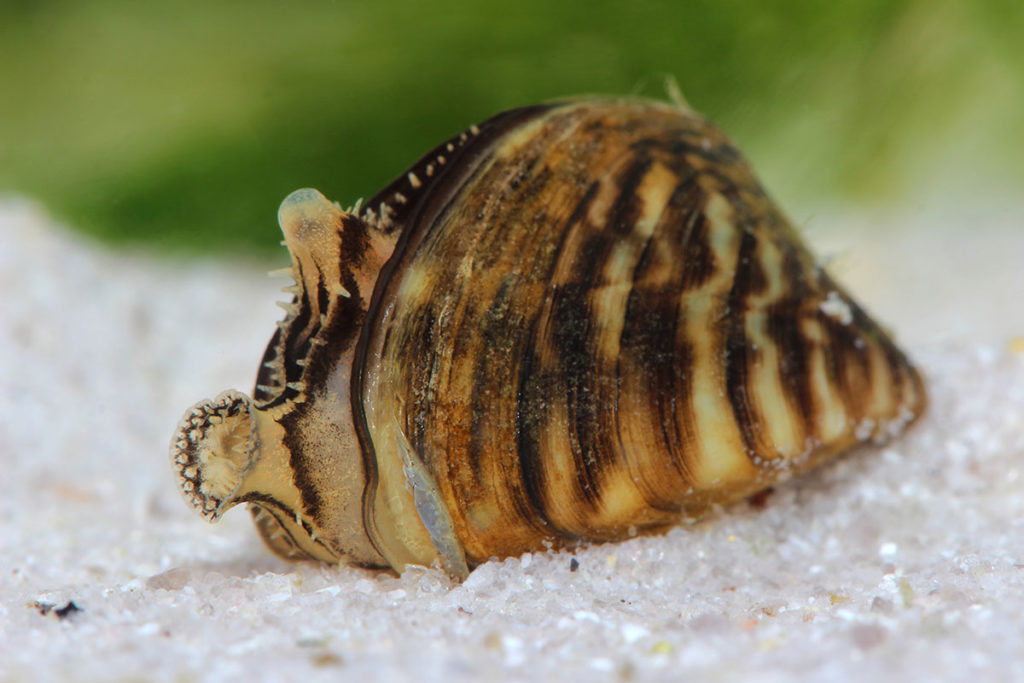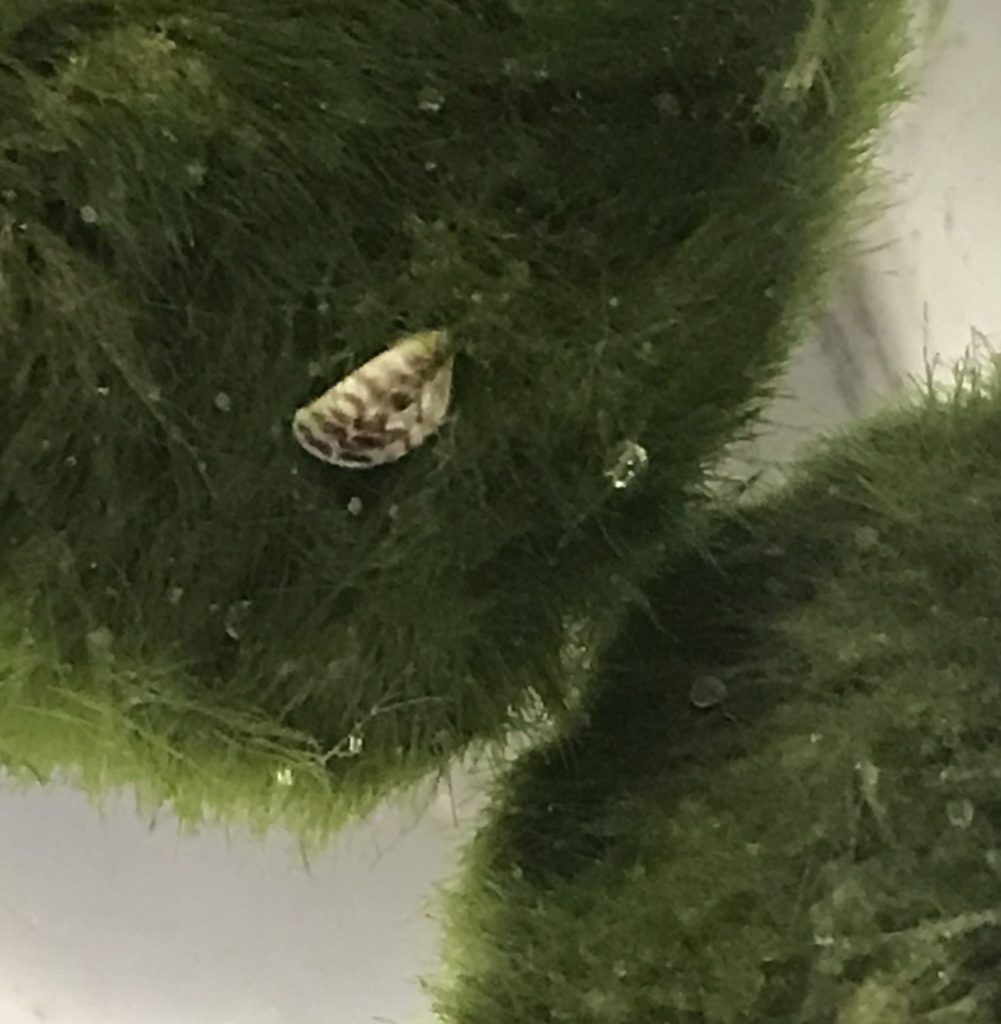
[lastupdated] EST
Continuing our coverage of invasive zebra mussels being discovered in marimo “moss” balls, today PIJAC issued an Invasive Species Alert.
As of Friday evening, news reports added North Carolina and South Carolina pet retailers to the list of locations where zebra mussel infestations have been confirmed. The PIJAC update below reiterates contaminated moss balls in two states where problems were known (Washington and Oregon) and adds two more (Montana and Florida). A release from the Michigan Department of Natural Resources revealed Colorado as another state where they’ve been found. Additional research late in the evening has uncovered confirmed findings in Georgia, Idaho, Wyoming, and Virginia to the list of states where contaminated marimo moss balls have been found. On Saturday, the Pennsylvania Fish and Boat Commission announced that zebra mussels had been found in moss balls in at least one pet store in the state.
When AMAZONAS first issued this update from PIJAC, the running tally was six states. Just hours later, many additional reports came to light. There are confirmed discoveries of zebra mussel-infested marimo moss balls in 12 states. As of Saturday evening, there are anecdotal reports from aquarists in Maine and Illinois as well, although these are not yet confirmed. There are likely many unknown instances at this time, and it’s probably safe to presume that this is a nationwide problem.
The US Fish and Wildlife Service has set up a webpage in response to this problem. Their mandate is strict—Destroy, Don’t Dump!

Information released by the Montana Fish, Wildlife, and Parks department suggests that the contaminated moss balls were in fact imported from Ukraine by an importer in California, and then distributed to pet stores nationwide.
It is paramount that anyone who has recently purchased moss balls considers that they are likely contaminated and take appropriate steps. The PIJAC update includes more detailed instructions for consumers who may now have to deal with contaminated moss balls.
Note, in some states, you may be required by law to report your discovery of zebra mussels in your moss balls or aquariums to your local department of natural resources or other invasive species management agency.
via the Pet Industry Joint Advisory Council (PIJAC)
PIJAC wishes to inform you of an important invasive species threat that was recently discovered in the U.S. Zebra mussels (Dreissena polymorpha), which are regarded as one of the most troublesome invasive species in North America, have been discovered within a variety of moss ball products designed for aquarium use, including products being sold and used in aquariums in stores in multiple states, including Oregon, Washington, and Florida.
Zebra mussels are small, fingernail-sized mollusks native to the Caspian Sea region of Asia. They have three life stages: larval, juvenile, and adult. In the larval stage, the mussels live freely in the water column, where they can be easily transported. Adult zebra mussels can stay alive for several days outside of water and commonly attach to boats, fishing equipment and aquarium plants.
In spite of their small size, zebra mussels clog pipelines used for water filtration, render beaches unusable, and damage boats. They also negatively impact aquatic ecosystems by harming native organisms.
Specifically identified in a report from the U.S. Geological Survey Nonindigenous Aquatic Speciesm, a release from the Oregon Department of Fish and Wildlife, and a press release from Montana Fish, Wildlife and Parks, PIJAC urges you to take immediate action to inspect your fish tanks and take action as necessary.
You should also share this information with your aquatic product customers immediately.
For more information on invasive species prevention and making wise pet choices to protect the environment, go to:
To contact PIJAC with any questions, email info@pijac.org or call 202-452-1525
Zebra Mussel Guidelines From PIJAC
Note that these guidelines are preliminary or provisional and are subject to revision. If you have any questions please contact your state’s appropriate governing body for aquatic invasive species or your local pet store for expert advice on the tank restarting process.
We recommend that you take the following steps with all moss ball aquatic plant products:
- Decontaminate the moss ball using ONE of the following methods, ensuring that the disposal method you choose is in compliance with state laws and animal welfare regulations:
- Place the moss ball into a sealable plastic bag and freeze for at least 24 hours, OR
- Place the moss ball in boiling water for at least 1 full minute, OR
- Submerge the moss ball in chlorine bleach, diluted to one cup of bleach per gallon of water, OR Submerge the moss ball in undiluted white vinegar for 20 minutes.
- Once step 2 is complete, place the moss ball and any of its packaging in a sealed plastic bag and dispose in the trash.
- If vinegar, boiling water, or bleach was used, the liquid can be disposed down a household drain—never down a storm drain where it could enter and damage local waterways.
If the moss ball was placed in an aquarium, please take these additional steps:
- Collect any fish or other living organisms and place them in another container, with water from a separate, uncontaminated water source.
- Test the pH and temps of the new water and the water the fish came from. Fresh tap water can be dramatically different from an established tank especially if the tank has turned more acidic over time.
- For ALL city water add a dechlorinator to the new water before adding the fish to the temporary holding container.
- Add an air stone in the temporary container so they do not suffocate during the process.
- Ways to reduce stress in the holding container include:
- Adding clean plastic plants that can just float around
- Keeping the animals in a low light area
- Separate overly aggressive fish into a separate holding container
- Sterilize the contaminated aquarium water by adding ¼ teaspoon bleach for each gallon of water. Let the water sit for 15 minutes and then dispose of the sterilized water down a household drain.
- Clean the aquarium and accessories using one of the following methods, ensuring that the disposal method you choose is in accordance with manufacturer recommendations:
- Boiling Method:
- Use water that is 140 degrees F to flush and coat the tank and all accessory surfaces, OR
- Disinfection Method:
- Make a disinfection solution using 1/3 cup of bleach per gallon of water.
- Soak the aquarium, substrate, rocks, décor, and filter media in the bleach water solution for 15 minutes.
- Rinse off all items prior to setting up the aquarium.
- Boiling Method:
- Re-establishing the tank:
- Dispose of the previously used filter media and replace it with new media.
- Use a dechlorinating product to neutralize any residual chlorine prior to reintroducing aquatic life.
- Add commercially available aquarium bacteria starter to replace all the beneficial bacteria that were removed during this process.
- It is recommended that you do another water change within a week and continue to monitor the tank for any unusual or unexpected aquatic life.
###






Trackbacks/Pingbacks